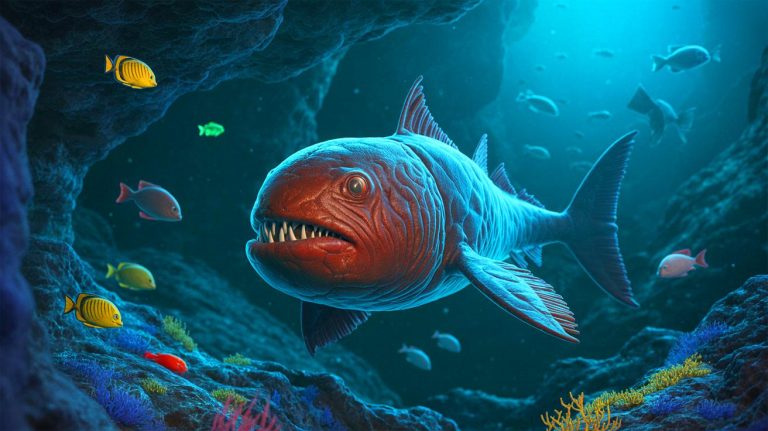| IN A NUTSHELL |
|
The ocean’s depths hold secrets that continue to astonish the scientific community. The recent discovery of a new predator in the Atacama Trench has captured global attention, highlighting the profound mysteries lurking beneath the waves. This fascinating find, Dulcibella camanchaca, is a testament to the incredible adaptability of life in extreme conditions. As scientists delve deeper into these remote regions, they uncover remarkable insights that challenge our understanding of marine ecosystems. This article explores the significance of this discovery, the adaptations of this unique predator, and what it means for future oceanic research.
An Unexpected Find in the Atacama Trench
The Atacama Trench, a marine abyss stretching over 4.9 miles beneath the ocean surface, has long intrigued researchers. During a 2023 expedition, scientists embarked on a mission to study its elusive inhabitants. Equipped with baited traps, they aimed to attract scavengers, but the results exceeded all expectations. Among the creatures captured was a large predatory amphipod previously unknown to science. The discovery of Dulcibella camanchaca was a stroke of luck, as deep-sea research often involves a mix of skill and chance.
Lead author Johanna Weston of the Woods Hole Oceanographic Institution emphasized the element of surprise in their findings. She noted that while baited traps require expertise, the unpredictability of the ocean often yields astounding results. This unexpected discovery opens new avenues for research and underscores the importance of continued exploration in the world’s ocean trenches.
A Perfect Fit for the Extreme Depths
Dulcibella camanchaca exemplifies the remarkable adaptability of life forms residing in extreme environments. This amphipod, devoid of eyes, has evolved specialized senses that enable it to navigate the pitch-black depths of the ocean floor. Its adaptability is a testament to the resilience of life in one of Earth’s most inhospitable habitats. As Johanna Weston explained, amphipods like Dulcibella camanchaca are incredibly diverse, thriving in environments ranging from headwater streams to the ocean’s deepest trenches.
What sets this species apart is its resemblance to more familiar coastal creatures. Despite living miles beneath the surface, Dulcibella camanchaca shares similarities with its relatives found on beaches. This discovery challenges preconceived notions about deep-sea life and underscores the interconnectedness of marine ecosystems across vast distances.
Life in the Abyss: How Creatures Thrive in Extreme Ocean Depths
Co-author Carolina E. González from the Instituto Milenio de Oceanografía shed light on the unique adaptations of Dulcibella camanchaca. The amphipod’s slender and agile body allows it to move effortlessly across the seafloor, while its large, pincer-like front legs are perfectly suited for catching prey. These adaptations are crucial for survival in an environment where pressure exceeds 1,000 times that of the surface.
The extreme conditions of the Atacama Trench demand unparalleled resilience from its inhabitants. Creatures like Dulcibella camanchaca have evolved to thrive in an environment that tests the limits of biological endurance. This discovery not only enriches our understanding of deep-sea ecosystems but also highlights the incredible diversity of life on our planet.
Exploring the Mysterious Ecosystem
The discovery of Dulcibella camanchaca adds a new layer to the intricate puzzle of the Atacama Trench’s ecosystem. As scientists piece together the connections between various species, they gain insights into the dynamics of this mysterious environment. The presence of such a unique predator suggests a complex web of interactions that remain largely unexplored.
As Weston remarked, the process of deep-sea exploration involves both skill and a measure of luck. Each new discovery brings us closer to understanding the rich tapestry of life that exists beneath the waves. The Atacama Trench, with its hidden wonders, continues to beckon researchers to uncover its secrets and reveal the untold stories of its inhabitants.
The discovery of Dulcibella camanchaca in the Atacama Trench is a reminder of the vast unknowns that lie beneath the ocean’s surface. As scientists continue to explore these remote regions, they unveil new species and adaptations that challenge our understanding of life on Earth. What other extraordinary creatures await discovery in the depths of our oceans, and how will they reshape our knowledge of the natural world?
Did you like it? 4.5/5 (25)






This is amazing! I wonder what else is hiding in those deep trenches. 🐙
How does Dulcibella camanchaca hunt without eyes? 😮
Incredible discovery! Thanks for sharing such fascinating research.
Wait, an amphipod without eyes? That’s so bizarre and cool! 🤯
I hope they find more species in the Atacama Trench.
This article was really well-written. Great job!
Is there a video of Dulcibella camanchaca in action? I’d love to see it! 🎥
What do these creatures eat in such a dark place?
Wow, it’s amazing how life adapts in such extreme conditions. Nature is incredible!
I’m skeptical. How do they know it’s a predator?